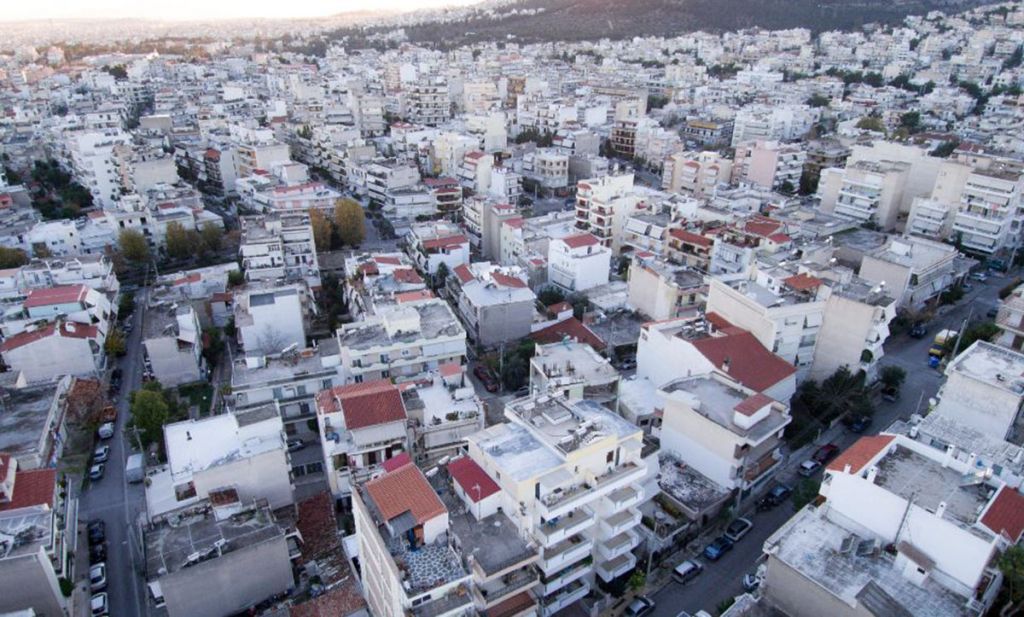The level of increase in values for newly built apartments is determined in the third quarter of 2024 at 8.51% compared to the corresponding period one year ago and at 24.70% compared to two years ago, while for older apartments, the increase is also very large (7.81% compared to a year ago and 22.68% compared to two years ago).
Over the course of a decade, the average increase in the value of each type of apartment was measured at close to 80%, on the way to doubling the price.
In new-age apartments (up to 5 years old), with an average area of 105 sq.m., a median age of just 1 year and on the 2nd floor, the market research led to the conclusion that the highest values are recorded in Cholargos (4,267 euro/sq.m. from 4,048 euro/m2, with an annual increase of 5.41%), and then in order: in the area of Old Faliro (3,715 euro/m2 from 3,400 euro/m2 with an annual increase of 9.26 %), in Maroussi (3,600 euro/m2 from 3,304 euro/m2 with an annual increase of 8.96%), in Ampelokipi (3,080 euro/m2 from 2,795 euro/m2 with an annual an increase of 10.20%) and finally in Peristeri (2,610 euro/sq.m. from 2,401 euro/sq.m. with an annual increase of 8.70%).
Based on the above, Ampelokipi recorded the largest, while Cholargos recorded the smallest annual increase, compared to all other regions.
regarding the old apartments (35+ years), average surface area 106 sq.m., median age 44 years and 2nd floor, the survey showed that the highest values are recorded in Cholargos (2,432 euro/sq.m. from 2,235 euro/sq. .m. with an annual increase of 8.81%) and then in order: in Marousi (2,000 euro/m2 from 1,850 euro/m2 with an annual increase of 8.11%), in Paleo Faliro (1,893 euro /m2 from 1,751 euro/m2 with an annual increase of 8.11%), in Peristeri (1,588 euro/m2 from 1,487 euro/m2 with an annual increase of 6.79%) in the area of Ampelokipi (1,562 euro/sq.m. from 1,457 euro/sq.m. with an annual increase of 7.21%).
Based on the above, Cholargos recorded the largest annual increase while Peristeri recorded the smallest annual increase, compared to all other regions.
The results of the temporally deeper analysis during the last 10 years in typical middle-floor apartments without a view or other special featuresare remarkable. From the processing of the data, it appears that there is an average increase of 85% in newly built and 78% in older apartments, compared to the values of 2015. For example, in Ampelokipi the average asking price in 2015 was 1,654 euros/sq.m. , in 2018 at 1,628 euros, gradually rose to 1,992 euros/sq.m. in 2021 and to 2,500 euros in 2022, to further increase to 3,080 euros/sq.m. in 2024, i.e. a 10-year increase of 86%. A cumulative increase between 2015 and 2024 of 94% was recorded in Marousi, from 1,857 euros/sq.m. in 2015 at 2,267 euros in 2021, at 3,300 euros/sq.m. last year and at 3,600 euros this year. The prices in the 10-year period in P. Faliro "ran" by +84%, always according to Geoaxis, from 2,024 euros/sq.m. in 2015 at 2,465 euros/sq.m. in 2021 and at 3,715 euros/sq.m. this year. In Peristeri the cumulative increase is 83%, from 1,424 euros/sq.m. in 2015 at 1,615 euros/sq.m. in 2021 and at 2,610 euros/sq.m. this year. In Holargos, the cumulative increase is 76%, from 2,423 euros/sq.m. in 2015 at 2,784 euros/sq.m. in 2021 and at 4,267 euros/sq.m. this year.
The rents
Among the dominant trends, as documented by Geoaxis, is the so-called "Generation Rent", a generation of renters unable to own a home, which is expected to dominate in the coming decades even in countries with high home ownership such as Greece and Spain. Characteristically, as can be seen in the table below, the decrease in the rate of owner-occupation by 2.6 percentage points in the period 2019-2022, in absolute numbers, corresponds to approximately 102,695 residences.
Another trend, as Geoaxis explains, is working from home. The new trend brought about by COVID-19 is working from home, with potentially significant and lasting effects on the real estate market. Although it is too early to predict the final footprint, all the studies so far at the Pan-European and Global level converge on the application of a hybrid work model, with the possibility of telework as a key element. The adoption of such a model where for 1 or 2 days a week the worker will be at home, undoubtedly creates the need for larger houses, so that there is the necessary space for isolation and located not necessarily close to work, since cumulatively the days and commuting times will be significantly reduced relative to the pre-covid five-day daily commuting requirement.
Constructions with ESG specifications
The adoption of ESG elements (environment, society, corporate governance), the emergence of protocols of a sanitary nature, the need for new smart technologies and flexible spaces and the shift to living create new data in future constructions with a significant increase in the cost of construction, and therefore in the final sale price, add















